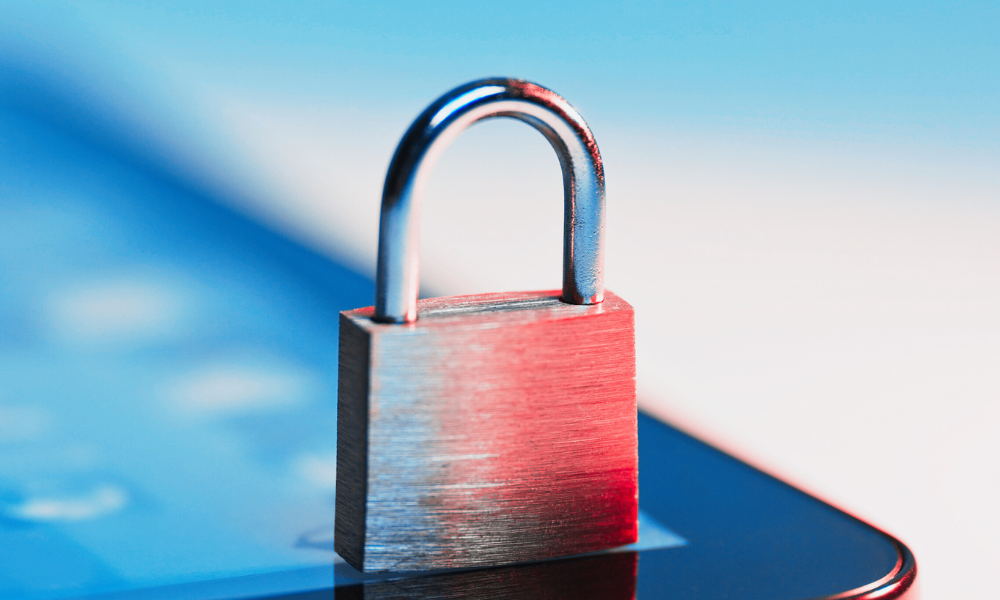Cyber Security, The adNET Way
12 Best Practices for Ensuring Mobile Device Security
We all roll our eyes when the phone or computer dings with that certain notification: Update Available. You've got to be careful, or else you might click something and be stuck without your device for the next 30 minutes.
However, what if we told you that these seemingly annoying updates are actually crucial for ensuring your mobile device security? With the amount of personal and sensitive information we store on our devices, it's important to take necessary measures to protect them from potential threats.
The Importance of Mobile Device Security
Since remote work has became commonplace, the use of mobile devices has increased significantly. We rely on our phones and laptops for communication, work, banking, shopping, and so much more. With this increased usage comes an increase in potential security threats.
To protect against these threats, it's important to follow best practices for mobile device security.
12 Best Practices for Mobile Device Security
Below, we explore 12 essential practices to fortify your device, keeping your data safeguarded against potential threats.
- Implement Strong Passwords and Biometric Authentication
Opt for complex passwords (a combo of uppercase, lowercase, numbers, symbols, minimum length, etc.) Most sites/services require this by default nowadays, but it's good practice even when you're not being forced. Consider utilizing a password manager to generate and store strong passwords, and take advantage of biometric authentications such as fingerprint or facial recognition, for an added layer of security.
- Keep Operating System, Software, and Apps Updated
Manufacturers frequently release updates that patch security vulnerabilities. Regularly updating your device’s operating system, along with any installed software and apps, ensures you’re protected against known threats.
- Enable Device Encryption
Encryption converts your data into a coded form, making it unreadable to unauthorized users. Enabling device encryption is crucial in protecting your data should your device be lost or stolen.
- Use Mobile Device Management (MDM) Solutions
MDM solutions allow businesses to effectively manage and secure mobile devices across the organization. Features such as app management and data encryption are particularly beneficial for businesses with remote work policies.
- Implement Remote Wipe and Lock Features
Remote wipe and lock capabilities enable you to erase or lock your device remotely in case it is misplaced or stolen. This feature can prevent unauthorized access and protect sensitive information. Essentially, it acts as a failsafe, giving you the power to safeguard your data and maintain control over your device's security.
- Avoid Jailbreaking or Rooting Devices
Jailbreaking (iOS) or rooting (Android) grants unrestricted access to system files and settings, offering enhanced customization. However, this also bypasses built-in security measures, leaving devices vulnerable to malware and unauthorized access. To safeguard device security, it's best to avoid jailbreaking or rooting.
- Be Cautious of Public Wi-Fi Networks
Public Wi-Fi networks are not always secure and sometimes you can't even be sure if it's the real thing or someone putting out a network to look like the airport, coffee shop, etc. If possible, consider utilizing the built-in hotspot on your phone or use services like a Virtual Private Network (VPN) to encrypt your data and secure your connection.
- Install Antivirus and Anti-Malware Software
Antivirus and anti-malware solutions provide an additional safeguard by detecting and removing malicious software from your device.
- Educate Users About Security Best Practices
Awareness is key to preventing security breaches. Educate users on the importance of security measures and encourage them to follow best practices diligently.
- Implement App Whitelisting and Blacklisting
Control which apps are permitted to be installed on company devices by implementing whitelisting and blacklisting. Whitelisting allows only approved apps to be installed, ensuring that only trusted and authorized software is used within the organization.
Blacklisting prohibits the installation or use of specified apps that pose security risks or violate company policies. This allows organizations to enforce strict application control policies, mitigate security threats, and maintain compliance with regulatory requirements.
- Regularly Back Up Data
Ensure that your data is backed up regularly and test those backups! This practice not only aids in recovery in case of data loss or device failure, but also simplifies the process of securely wiping a lost or stolen device without losing important information.
- Monitor and Respond to Security Threats
Stay informed about the latest security threats and ensure you have measures in place to detect and respond to any potential breaches swiftly.
Mobile Device Security for Remote Workers and Business Professionals
Mobile device security is a big concern for remote workers and business professionals alike. By implementing these best practices, you can significantly reduce the risk of security breaches and protect sensitive information from cyber threats. Remember, being proactive is always better than reactive.
